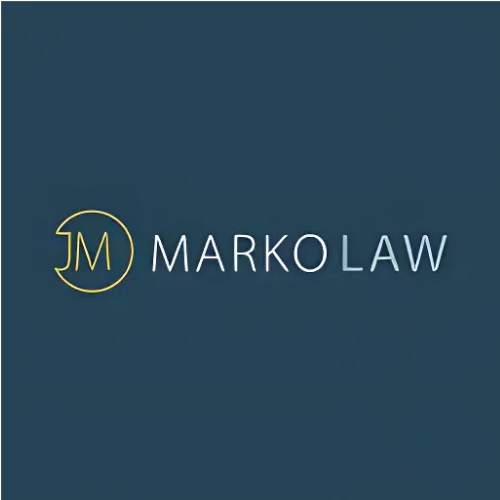Sexual Harassment in Educational Institutions: Know Your Rights
Sexual harassment is a serious issue that can have profound effects on students' well-being and academic success. As educational institutions strive to create safe and inclusive environments for learning, it is essential for students to understand their rights and protections against sexual harassment.
Sexual harassment is defined as unwelcome conduct of a sexual nature that creates a hostile, intimidating, or offensive environment for the victim. This conduct can take various forms, including verbal, non-verbal, or physical behavior, and may involve unwanted advances, requests for sexual favors, or derogatory comments based on gender or sexual orientation.
It's important to note that sexual harassment can occur between peers, from teachers or staff to students, or even among students themselves. Regardless of the perpetrator, sexual harassment is unacceptable and violates students' rights to a safe and respectful learning environment.
Sexual harassment is unfortunately prevalent in educational institutions at all levels, from elementary schools to universities. Research shows that a significant number of students experience sexual harassment during their academic careers, with LGBTQ+ students, students of color, and students with disabilities disproportionately affected.
The pervasive nature of sexual harassment in educational institutions highlights the urgent need for action to prevent and address these behaviors. By understanding their rights and protections, students can empower themselves to speak out against sexual harassment and create safer learning environments for all.
Sexual Harassment
Types of Sexual Harassment
Quid Pro Quo: This type of harassment involves a situation where a person in a position of authority, such as a teacher or administrator, offers academic favors or threatens negative consequences in exchange for sexual favors. For example, a teacher may offer a student better grades in return for engaging in sexual activity.
Hostile Environment: This occurs when the behavior of peers, teachers, or staff creates an intimidating, offensive, or hostile environment for the victim. This can include unwanted comments, gestures, jokes, or physical contact of a sexual nature that interferes with a student's ability to learn and participate in school activities.
Cyber Harassment: With the widespread use of technology, cyber harassment has become increasingly common in educational settings. This includes online bullying, harassment via social media platforms, sharing explicit content without consent, and sexting.
Impact of Sexual Harassment on Students
Emotional Distress: Students who experience sexual harassment often suffer from feelings of shame, guilt, anxiety, and depression. The trauma of harassment can lead to a decline in self-esteem and confidence.
Academic Consequences: Sexual harassment can disrupt a student's ability to focus and engage in their studies, leading to poor academic performance and a decline in school attendance. This can ultimately affect their long-term educational goals and opportunities.
Social Isolation: Students may withdraw from social interactions and extracurricular activities out of fear of encountering their harasser or facing further harassment from peers. This can lead to feelings of loneliness and alienation from their peers and school community.
Physical Health Effects: The stress and trauma of sexual harassment can manifest in physical symptoms such as headaches, stomachaches, and sleep disturbances. Chronic stress from harassment can also weaken the immune system and increase the risk of other health problems.
Legal Rights and Protections
Title IX
Title IX of the Education Amendments Act of 1972 is a federal law that prohibits sex discrimination in educational institutions that receive federal funding. While Title IX is often associated with gender equity in athletics, it also plays a crucial role in addressing sexual harassment and gender-based violence in educational settings.
Under Title IX, educational institutions are required to take prompt and effective action to address reports of sexual harassment, including conducting investigations, providing support services to victims, and implementing measures to prevent recurrence. Title IX also prohibits retaliation against individuals who report sexual harassment or participate in investigations.
In recent years, there has been increased attention to the role of Title IX in addressing sexual harassment on college campuses, with the Department of Education issuing guidance and regulations to clarify schools' obligations under the law. These efforts aim to ensure that all students, regardless of gender, can access education free from sexual harassment and discrimination.
Other Laws and Regulations
The Clery Act: This federal law requires colleges and universities that participate in federal financial aid programs to disclose information about crime on and around their campuses, including incidents of sexual harassment and assault. It also mandates certain policies and procedures for responding to and preventing sexual violence.
State Anti-Discrimination Laws: Many states have their own laws prohibiting discrimination and harassment in educational settings, which may provide additional protections beyond those afforded by federal law.
School Policies and Codes of Conduct: Educational institutions often have their own policies and codes of conduct that address sexual harassment and misconduct among students, faculty, and staff. These policies may include reporting procedures, investigation protocols, and disciplinary measures for perpetrators.
Rights of Students
The Right to Report: Students have the right to report incidents of sexual harassment to school administrators, Title IX coordinators, or law enforcement authorities, if applicable.
The Right to a Prompt and Fair Investigation: Schools are obligated to promptly and thoroughly investigate reports of sexual harassment and take appropriate action to address the behavior.
The Right to Support Services: Victims of sexual harassment have the right to access support services, such as counseling, medical care, academic accommodations, and safety measures, to help them cope with the effects of harassment and continue their education.
The Right to Non-Retaliation: Students who report sexual harassment or participate in investigations have the right to protection against retaliation or adverse treatment from school officials, peers, or others involved in the process.
Reporting and Seeking Support
Steps for Reporting Sexual Harassment in Educational Institutions
Document the Incident: Write down details of the incident, including what happened, when and where it occurred, and any witnesses present. Keep any evidence, such as text messages, emails, or photographs, that may support your report.
Review School Policies: Familiarize yourself with your school's policies and procedures for reporting sexual harassment. This information is often available in student handbooks, codes of conduct, or on the school's website.
Identify a Trusted Adult: Reach out to a trusted adult, such as a teacher, counselor, or administrator, and inform them of the incident. They can provide guidance and support throughout the reporting process.
File a Formal Complaint: Follow your school's procedures for filing a formal complaint of sexual harassment. This may involve submitting a written statement detailing the incident and participating in an investigation conducted by the school.
Seek Support Services: Take advantage of support services offered by your school or community, such as counseling, medical care, and advocacy. These services can help you cope with the effects of harassment and navigate the reporting process.
Consider Legal Options: If you believe your rights have been violated or your school has failed to adequately address the harassment, you may want to explore legal options with the assistance of a lawyer or advocacy organization.
Available Support Resources for Students
Title IX Coordinators: Title IX coordinators are responsible for overseeing compliance with Title IX and handling reports of sexual harassment in educational institutions. They can provide information about your rights and options for reporting harassment.
Counseling Services: Many schools offer counseling services to students, which can provide emotional support, coping strategies, and referrals to additional resources.
Student Advocacy Organizations: Student advocacy organizations, such as peer support groups or campus-based organizations, may offer peer support, advocacy, and educational programming on sexual harassment prevention and response.
Local Community Resources: Community organizations, crisis hotlines, and advocacy groups may offer additional support services, such as legal assistance, medical care, and shelter for victims of sexual harassment.
Preventing Sexual Harassment
Role of Educational Institutions
Educational institutions play a critical role in preventing sexual harassment and creating safe and respectful learning environments for all students. Schools have a legal and moral obligation to take proactive measures to address and prevent sexual harassment, as well as to promote gender equity and equality.
To fulfill this responsibility, educational institutions should:
- Establish clear and comprehensive policies and procedures for addressing sexual harassment, including reporting mechanisms, investigation protocols, and disciplinary measures for perpetrators.
- Provide regular training and education on sexual harassment prevention for students, faculty, staff, and administrators. This training should cover topics such as recognizing and responding to harassment, understanding consent, and promoting healthy relationships.
- Implement prevention programs and initiatives that address the root causes of sexual harassment, such as gender stereotypes, power dynamics, and societal attitudes towards sexuality.
- Foster a culture of respect, inclusion, and accountability within the school community, where all members feel valued, supported, and empowered to speak out against harassment.
Promoting Awareness and Education
Promoting awareness and education on sexual harassment is essential for preventing incidents and creating a culture of respect and consent within educational institutions. This can be achieved through various means, including:
- Conducting workshops, seminars, and presentations on sexual harassment prevention and response for students, faculty, staff, and parents.
- Integrating discussions on consent, boundaries, and healthy relationships into the school curriculum, across subjects such as health education, social studies, and literature.
- Providing age-appropriate materials and resources on sexual harassment and consent for students, including informational pamphlets, videos, and online resources.
- Engaging students in dialogue and reflection on issues related to gender, sexuality, power, and respect through activities such as peer-led discussions, role-playing exercises, and creative arts projects.
Creating Safe and Inclusive Environments for All Students
Creating safe and inclusive environments for all students is essential for preventing sexual harassment and promoting the well-being and academic success of every student. This involves:
- Implementing policies and practices that address discrimination and harassment based on sex, gender identity, sexual orientation, race, ethnicity, disability, and other protected characteristics.
- Providing support services and resources to students who experience harassment, including counseling, medical care, academic accommodations, and safety measures.
- Fostering a sense of belonging and community among students through inclusive practices, such as gender-neutral facilities, LGBTQ+-affirming policies, and diverse representation in curriculum and school activities.
- Encouraging bystander intervention and peer support to challenge and disrupt instances of harassment and promote a culture of solidarity and allyship.









.svg)








